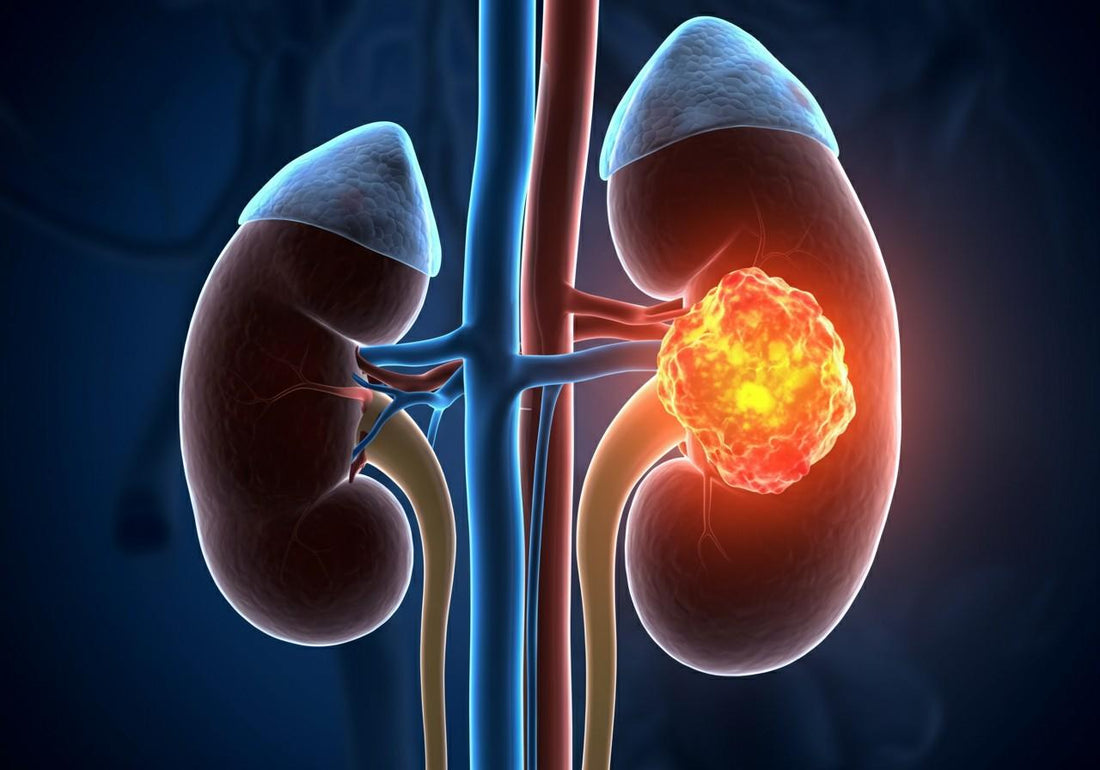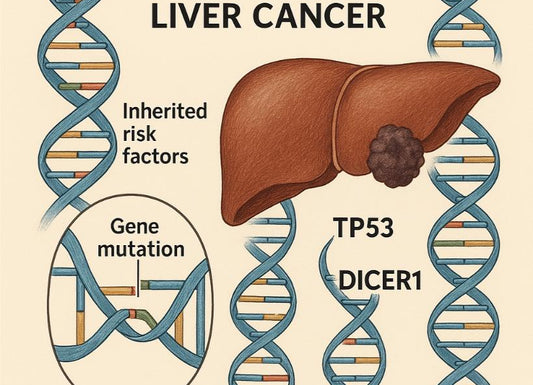Kidney Cancer Survival Rate by Stage
 Written By
Blen Shumiye, MD
Written By
Blen Shumiye, MD

affecting the urinary system. Each year, thousands of people are diagnosed with this condition worldwide. While advances in treatment have improved outcomes, survival rates vary widely depending on the stage at diagnosis, overall health, and available treatment options.
This article provides a comprehensive overview of kidney cancer survival rates by stage, explains factors influencing prognosis, and discusses life expectancy for patients. We also highlight the importance of early detection, recent advances in therapies, and supportive care that can improve both survival and quality of life.
What Is Kidney Cancer?
Kidney cancer originates in the kidneys, two bean-shaped organs responsible for filtering blood, removing waste products, and balancing fluids. The most common type is renal cell carcinoma (RCC), accounting for approximately 85–90% of cases. Other types include:
-
Transitional cell carcinoma (TCC) – begins in the lining of the renal pelvis.
-
Wilms tumor – a rare kidney cancer primarily affecting children.
-
Renal sarcoma – extremely rare, originating in the kidney’s connective tissue.
Why Survival Rates Matter
Survival rates provide insight into the average outlook for people with kidney cancer. These numbers are based on large groups of patients and cannot predict an individual’s exact outcome. However, they are statistical averages, and individual outcomes vary widely based on personalized treatment and other factors. They are valuable for understanding trends and setting realistic expectations.
How Survival Rates Are Measured
The 5-Year Survival Rate
When discussing cancer survival, experts often refer to the 5-year relative survival rate. This measures the percentage of people alive five years after diagnosis compared to the general population without cancer.
Relative vs. Absolute Survival
-
Relative survival rate adjusts for other causes of death, showing how kidney cancer specifically impacts survival.
-
Absolute survival rate includes all causes of death, which may not accurately reflect the cancer’s impact.
Kidney Cancer Staging and Its Role in Prognosis
The stage of kidney cancer at diagnosis is the most critical factor in determining prognosis and life expectancy. Staging describes how advanced the cancer is, including tumor size, lymph node involvement, and spread to distant organs.
The TNM Staging System
-
T (Tumor): Size and extent of the primary tumor.
-
N (Nodes): Spread to nearby lymph nodes.
-
M (Metastasis): Spread to distant organs.
Stages of Kidney Cancer
-
Stage I: Tumor confined to the kidney, ≤7 cm in size.
-
Stage II: Tumor >7 cm, still confined to the kidney.
-
Stage III: Cancer has spread to nearby lymph nodes or blood vessels but not to distant sites.
-
Stage IV: Cancer has spread beyond the kidney to distant organs (e.g., lungs, liver, bones, or brain).
Kidney Cancer Survival Rates by Stage

The following survival statistics are based on data from reputable sources, such as the American Cancer Society (ACS) and the National Cancer Institute’s Surveillance, Epidemiology, and End Results (SEER) program. Survival rates may vary depending on patient age, overall health, and treatment advances.
Stage I Survival Rate
-
5-year relative survival rate: ~81–93%
-
Outlook: Most patients diagnosed at this stage have favorable outcomes, particularly with surgery (partial or radical nephrectomy). The cancer is localized, and long-term remission is common.
Stage II Survival Rate
-
5-year relative survival rate: ~74–85%
-
Outlook: Prognosis remains favorable as the cancer is still confined to the kidney. Surgery is often curative, though the risk of recurrence is higher than in Stage I.
Stage III Survival Rate
-
5-year relative survival rate: ~53–70%
-
Outlook: Survival declines as cancer has spread to nearby lymph nodes or veins. Aggressive treatment, including surgery and possibly systemic therapy, is often required.
Stage IV Survival Rate
-
5-year relative survival rate: ~12–20%
-
Outlook: Prognosis is less favorable due to metastasis. However, newer immunotherapies and targeted treatments have improved survival compared to past decades. Some patients live significantly longer than the averages suggest.
Factors That Influence Prognosis Beyond Stage
While stage is the strongest predictor of survival, other factors play a role in determining outcomes:
-
Tumor Grade: High-grade tumors (more abnormal cells) grow and spread faster.
-
Histological Subtype: Clear cell carcinoma has different survival outcomes compared to papillary or chromophobe types.
-
Patient Age: Younger patients often respond better to treatment.
-
Overall Health: Conditions such as diabetes, hypertension, or chronic kidney disease may impact survival.
-
Response to Treatment: Some patients respond exceptionally well to targeted therapy or immunotherapy.
-
Performance Status: A patient’s ability to carry out daily activities strongly predicts survival.
Life Expectancy With Kidney Cancer
Early-Stage Kidney Cancer
Patients diagnosed with Stage I or II disease who undergo surgery often have life expectancies close to the general population. Many remain cancer-free for decades.
Advanced Kidney Cancer
For Stage III and IV patients, life expectancy varies widely:
-
Some may survive only a few years due to aggressive disease.
-
Others may live significantly longer with effective treatments, particularly immunotherapy combinations.
Long-Term Survivors
There are documented cases of long-term survivors even with metastatic kidney cancer, emphasizing the value of personalized treatment plans.
Advances in Kidney Cancer Treatment and Their Impact on Survival
Over the past two decades, treatment options for kidney cancer have expanded, improving survival outcomes.
Surgery
-
Partial nephrectomy: Removes only the tumor, preserving kidney function.
-
Radical nephrectomy: Removes the entire kidney, common for larger tumors.
Targeted Therapy
Drugs like tyrosine kinase inhibitors (TKIs) target blood vessel growth in tumors. Examples include sunitinib, pazopanib, and cabozantinib, which have improved survival for advanced kidney cancer.
Immunotherapy
Immune checkpoint inhibitors, such as nivolumab (Opdivo) and pembrolizumab (Keytruda), help the immune system attack cancer cells. Combination therapies (e.g., nivolumab + ipilimumab) have shown promising results in Stage IV disease.
Radiation Therapy
Rarely used as a primary treatment but effective for managing pain or metastases to the brain or bones.
Clinical Trials
Patients with advanced kidney cancer may benefit from clinical trials exploring innovative therapies.
Improving Survival and Quality of Life

Early Detection
The best chance for survival lies in detecting kidney cancer early, often through imaging for unrelated conditions (incidental findings). You can also learn about your health by taking a comprehensive urine test that screens for early signs of disease.
Lifestyle Choices
-
Quit smoking: Smoking increases recurrence risk.
-
Healthy diet: Rich in fruits, vegetables, and lean proteins, it supports immune health.
-
Regular exercise: Helps maintain strength and improve outcomes.
-
Follow-up care: Regular scans and check-ups detect recurrences early.
Supportive Care
Palliative care focuses on symptom management, comfort, and quality of life at all stages of kidney cancer.
Testing for UTIs is also a good way to monitor your urinary tract health, as UTIs can sometimes be a sign of underlying issues.
Prognosis by Age and Gender
Research indicates survival outcomes may vary by demographics:
-
Younger patients (under 50): Often have better long-term outcomes.
-
Gender differences: Women generally experience slightly higher survival rates than men.
-
Elderly patients: May face lower survival due to comorbidities and reduced tolerance for aggressive treatments.
Survival Trends Over Time
Survival rates for kidney cancer have improved due to advances in detection and treatment:
-
In the 1970s, the 5-year survival rate for localized kidney cancer was under 60%.
-
Today, modern therapies have increased survival rates for localized disease to above 90%.
-
Outcomes for metastatic kidney cancer have also improved with immunotherapy.
Conclusion
Kidney cancer survival rates by stage highlight the importance of early detection and personalized treatment. Patients diagnosed at Stage I or II often have excellent outcomes, while those with Stage III or IV face greater challenges. However, survival rates have improved significantly due to targeted therapies, immunotherapy, and advanced surgical techniques.
Life expectancy depends on factors like stage, age, health, and treatment response, but the outlook for kidney cancer patients continues to improve. Staying informed, pursuing appropriate treatments, and adopting healthy lifestyle habits can make a meaningful difference.
Worried about hereditary kidney disease?
Ribbon Checkup helps you stay ahead by tracking your kidney function, identifying family-related risks, and giving you practical steps to protect your future health. Don’t wait until symptoms appear early screening makes all the difference.
Related sources
References
Kidney cancer - Diagnosis and treatment - Mayo Clinic. (2025). Mayoclinic.org; https://www.mayoclinic.org/diseases-conditions/kidney-cancer/diagnosis-treatment/drc-20352669
Survival for kidney cancer. (2025, August 27). Cancerresearchuk.org. https://www.cancerresearchuk.org/about-cancer/kidney-cancer/survival
Survival Rates for Kidney Cancer. (2020). Cancer.org. https://www.cancer.org/cancer/types/kidney-cancer/detection-diagnosis-staging/survival-rates.html
Vandever, L. (2016, December 16). What’s the Connection Between Kidney Cancer Stage and Five-Year Survival Rates? Healthline; Healthline Media. https://www.healthline.com/health/kidney-cancer/kidney-cancer-prognosis-stage

Dr. Blen is a seasoned medical writer and General Practitioner with over five years of clinical experience. She blends deep medical expertise with a gift for clear, compassionate communication to create evidence-based content that informs and empowers. Her work spans clinical research, patient education, and health journalism, establishing her as a trusted voice in both professional and public health spheres.



